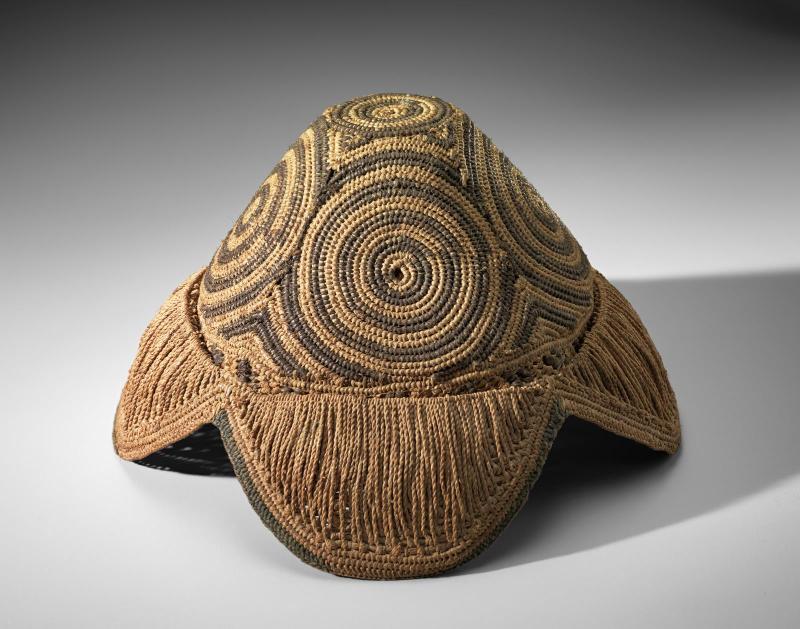Man's hat
Founded in the eighteenth century, the Kuba kingdom in what is now the Democratic Republic of the Congo controlled the lucrative ivory trade of its southern neighbors. By the nineteenth century, this trade wealth supported a great number of court artists, as well as courtiers with the leisure to dedicate themselves to the pursuit of fashion. The simplest form of hat, worn by all adult men, was a four-lobed cap of woven raffia that sat on the crown of the head, held in place by a simple pin pushed through the hair. This hat is a finely worked example of the form. Centered above each lobe, dark and plain raffia create radiating circles; small concentric circles also ornament the crown. Twisted raffia ornaments the lower lobes.
Through the 1920s, men in the Kuba kingdom traveled to the court to secure the king’s blessing before assuming adult responsibilities, such as getting married. The king would be the first to secure a hat on a man’s head. At one time, all men in the kingdom wore a hat; some courtiers wore hats with distinctive forms. The shape of this hat does not suggest that its original owner held a position at court, but the fine execution and accomplished ornamental details attest to the man’s good taste and the artist’s skill.
There are no works to discover for this record.

